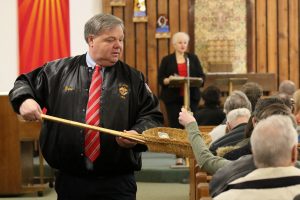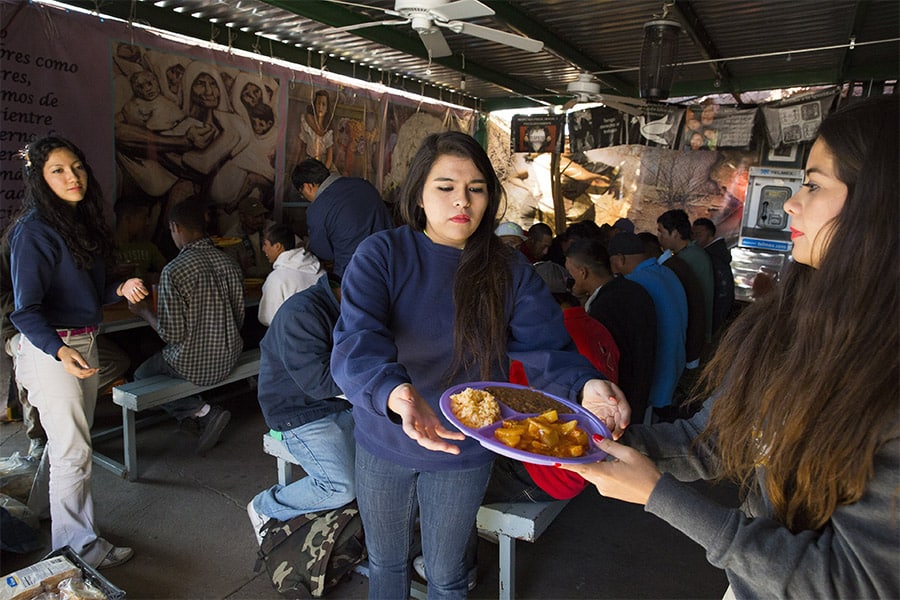
The Archdiocese of Baltimore announced this year that it recorded an operating deficit of $2.9 million for the 12 months ended June 30, 2020, for its main operations providing centralized services to parishes, schools and organizations of the archdiocese.
Chief Financial Officer John Matera noted that the archdiocese essentially broke even on the same services in fiscal 2019, with a surplus of $36,813.
Matera said that the coronavirus pandemic, which temporarily closed parishes and schools in mid-March 2020, had an effect on the financial picture for the archdiocese as a whole.
“The deficit could be attributed to a decrease in parish assessments, lower interest income and other revenue sources impacted by COVID-19,” he said.
Cathedraticum income to the archdiocese, which is a sliding-scale tax on parish offertory income, decreased by nearly $850,000 – about 6 percent – which was consistent with the decline in parish collections between March and June of up to 21 percent. National interest rates also fell, which resulted in a 20 percent decline from the prior period for the archdiocese.
When public Masses were suspended, the archdiocese realized that about 40 parishes had no online or electronic giving program, and about the same number were not using electronic communications tools provided by the archdiocese to engage with parishioners.
The archdiocese helped ensure that parishes had some form of online giving by setting up a centralized giving page that allowed donors to direct a donation to a specific parish. An archdiocesan team of regional development directors and financial controllers also worked with parishes to set up their own online giving portals, so that most of the parishes without online giving can now offer that option, Matera said.
Catholic Review Media and the other offices helped parishes connect to their parishioners via Flocknote, a texting and email tool, and myParish App, which provided prayers, digital worship aids and messaging to parishioners.
The archdiocesan Division of Information Technology also helped parishes set up livestreaming for Masses, providing cameras and connectivity for some parishes that did not have such technology.
The regional controllers, with the support of the archdiocesan Department of Human Resources, also assisted parishes with applying for Payroll Protection Program (PPP) loans overseen by the federal Small Business Administration, which did not have to be paid back if the funds were used for certain conditions, including keeping employees on staff and paid during the early weeks of the crisis.
“Some of the impact for parishes on the lower offertory collections was offset by lower utility costs as buildings were not in use,” Matera said, but hard costs for facilities and staffing still had to be paid. The PPP helped with some of that.
The pandemic continues to affect the archdiocese in the current fiscal year, although efforts are underway to address those concerns. In February, the archdiocese eliminated 25 positions, 14 of them vacant.
Pensions for laity and clergy have been underfunded for many years. The underfunding in the clergy pension plan has been fully addressed, in part, by a portion of the Embracing Our Mission capital campaign, which is nearly complete. The lay plan, which was frozen in 2011, is 75 percent funded.
The archdiocese also offered voluntary lump-sum payouts at 75 percent of the benefit obligation amount to eligible participants of the lay pension plan. In March, the archdiocese paid out $21 million to a total of 867 people who opted for the payment, about half those eligible, and on par with what consultants projected. “We lost 100 percent of the liability (for those participants) but only 75 percent of the related assets,” Matera said. “The offer was well received by the 1,800 current and past employees who were eligible for the offer.”
Although the pandemic strained some areas of health care, the archdiocese’s centrally managed, self-insured health, benefit and risk insurance programs saw fewer claims. A surplus of $7,338,502 was recorded in FY20 primarily due to lower-than-expected health related claims.
“These gains came at an opportune time, as parishes, schools and charities reeling from the effect of the pandemic were provided grants covering a full month of health insurance premiums, as well no increases to premiums for the current fiscal year,” Matera said.
Matera said the archdiocese remains committed to fiscal accountability, noting that it was one of five dioceses in the country to receive a perfect score for financial transparency from Voice of the Faithful, an independent lay group that has been tracking diocesan fiscal transparency since 2017.
Read the archdiocesan financial report here.
Email Christopher Gunty at editor@CatholicReview.org.
Also see
Copyright © 2021 Catholic Review Media






